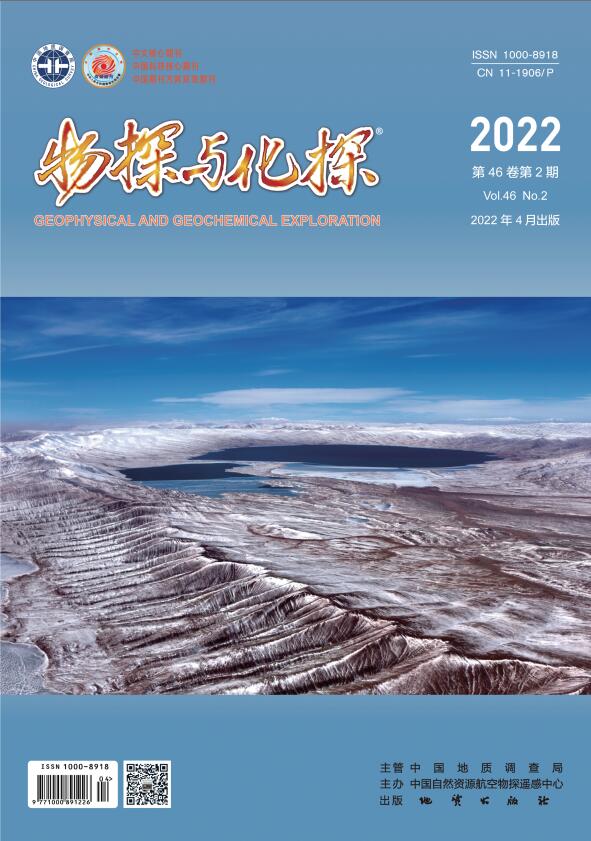| [1] |
李文龙, 黄贤龙, 张连第, 等. 天津市滨海新区地热地质条件及热储特征分析[J]. 中国水运, 2014, 14(11):280-282
Google Scholar
|
| [2] |
Li W L, Huang X L, Zhang L D, et al. Analysis of geothermal geological conditions and thermal storage characteristics in Tianjin Binhai New Area[J]. China Water Transport, 2014, 14(11):280-282
Google Scholar
|
| [3] |
阮传侠, 于彦, 高宝珠, 等. 天津滨海新区地热流体水化学特征分析[J]. 地下水, 2010, 2(1):51-53.
Google Scholar
|
| [4] |
Ruan C X, Yu Y, Gao B Z, et al. Hydrochemical characteristics analysis of geothermal fluids in Tianjin Binhai New Area[J]. Groundwater. 2010, 2(1):51-53.
Google Scholar
|
| [5] |
赵平, 谢鄂军, 多吉, 等. 西藏地热气体的地球化学特征及其地质意义[J]. 岩石学报, 2002, 18(4):539-550.
Google Scholar
|
| [6] |
Zhao P, Xie E J, Duo J, et al. Geochemical characteristics of geothermal gases and geological significance in Xizang[J]. Acta Petrologica Sinica, 2002, 18(4):539-550.
Google Scholar
|
| [7] |
刘昭, 蔺文静, 张萌, 等. 西藏尼木—那曲地热流体成因及幔源流体贡献[J]. 地学前缘, 2014, 21(6):366-367.
Google Scholar
|
| [8] |
Liu Z, Lin W J, Zhang M, et al. Genesis of Nimu-Nagqu geothermal fluids in Xizang and contribution of mantle-derived fluids[J]. Geoscience Frontier, 2014, 21(6): 366-367.
Google Scholar
|
| [9] |
叶海龙, 樊柄宏, 白细民, 等. 地热水混合比例估算探讨[J]. 江西地质, 2017, 18(4):317-322.
Google Scholar
|
| [10] |
Ye H L, Fan B H, Bai X M, et al. Discussion on the estimation of the mixing ratio of geothermal water[J]. Geology of Jiangxi, 2017, 18(4):317-322.
Google Scholar
|
| [11] |
王莹, 周训, 于渡, 等. 应用地热温标估算地下热储温度[J]. 现代地质, 2007, 21(4):606-612.
Google Scholar
|
| [12] |
Wang Y, Zhou X, Yu D, et al. Estimation of storage temperature of underground thermal using geothermal temperature scale[J]. Geoscience, 2007, 21(4):606-612.
Google Scholar
|
| [13] |
宋小庆, 段启彬, 孟凡涛, 等. 贵州息烽温泉地质成因分析[J]. 地质科技情报, 2014, 33(5):216-220.
Google Scholar
|
| [14] |
Song X Q, Duan Q B, Meng F T, et al. Geological genesis analysis of Xifeng hot spring in Guizhou[J]. Geological Science and Technology Information, 2014, 33(5):216-220.
Google Scholar
|
| [15] |
袁建飞, 邓国仕, 徐芬, 等. 川西南喜德热田地下水水文地球化学特征[J]. 现代地质, 2017, 31(1):200-208.
Google Scholar
|
| [16] |
Yuan J F, Deng G S, Xu F, et al. Hydrogeochemical characteristics of groundwater in Xide hot field in southwestern Sichuan[J]. Geoscience, 2017, 31(1): 200-208.
Google Scholar
|
| [17] |
马振民, 何江涛, 张锡明. 菏泽凸起地下热水的水文地球化学特征及成因分析[J]. 山东地质, 2000, 16(2):24-30.
Google Scholar
|
| [18] |
Ma Z M, He J T, Zhang X M. Hydrogeochemical characteristics and genesis analysis of underground hot water in Heze uplift[J]. Shandong Geology, 2000, 16(2):24-30.
Google Scholar
|
| [19] |
张保建. 鲁西北地区地下热水的水文地球化学特征及形成条件分析[D]. 北京: 中国地质大学, 2011.
Google Scholar
|
| [20] |
Zhang B J. Analysis of hydrogeochemical characteristics and formation conditions of underground hot water in northwestern Shandong[D]. Beijing: China University of Geosciences, 2011.
Google Scholar
|
| [21] |
林黎, 高宝珠, 阮传侠, 等. 全国地热资源研究评价与区划——天津市地热资源现状研究评价与区划[R]. 天津:天津地热勘查开发设计院, 2014.
Google Scholar
|
| [22] |
Lin L, Gao B Z, Ruan C X, et al. National geothermal resources research evaluation and division- Research, evaluation and division of geothermal resources in Tianjin[R]. Tianjin:Tianjin Geothermal Exploration and Development-Designing Institute, 2014.
Google Scholar
|
| [23] |
汪啸. 广东沿海典型深大断裂带地热水系统形成条件及水文地球化学特征[D]. 武汉: 中国地质大学, 2018.
Google Scholar
|
| [24] |
Wang X. Formation conditions and hydrogeochemical characteristics of the geothermal water system in the typical deep and large fault zone along the coast of Guangdong[D]. Wuhan: China University of Geosciences, 2018.
Google Scholar
|
| [25] |
孙红丽. 关中盆地地热资源赋存特征及成因模式研究[D]. 北京: 中国地质大学, 2015.
Google Scholar
|
| [26] |
Sun H L. Study on the occurrence characteristics and genetic model of geothermal resources in the Guanzhong Basin[D]. Beijing: China University of Geosciences, 2015.
Google Scholar
|
| [27] |
程万庆, 唐永香. 滨海新区深部地热资源调查评价报告[R]. 天津:天津地热勘查开发设计院, 2017.
Google Scholar
|
| [28] |
Cheng W Q, Tang Yong X. Investigation and evaluation report of deep geothermal resources in Binhai New Area[R]. Tianjin:Tianjin Geothermal Exploration and Development-Designing Institute, 2017.
Google Scholar
|






 DownLoad:
DownLoad: